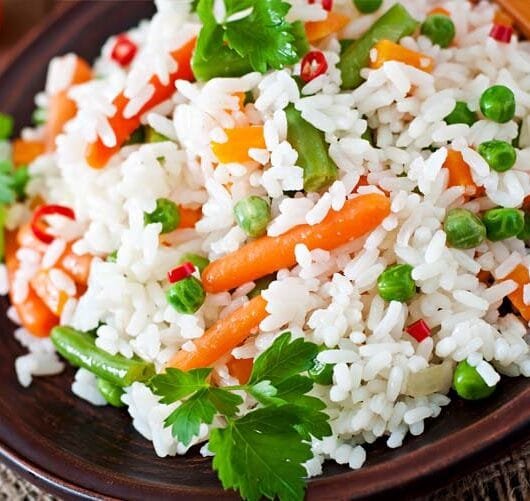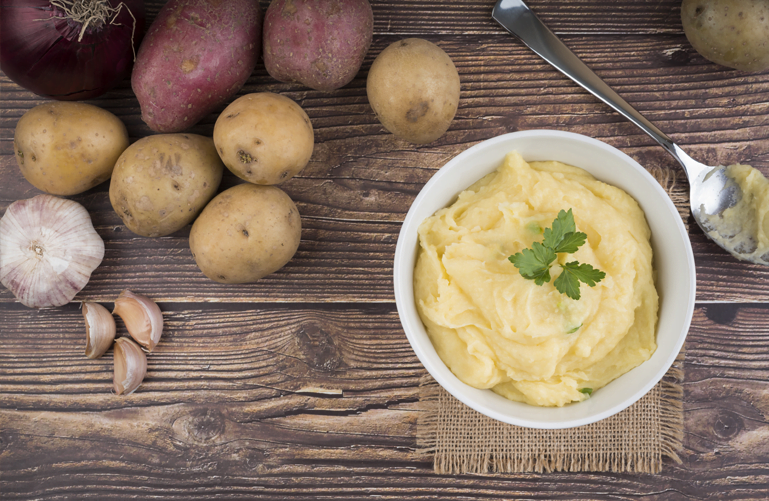This Rice pilaf recipe is a delicious side dish of aromatic rice cooked in broth and seasoned with spices. It's easy to prepare and can be customized with additional ingredients like vegetables and herbs to add more flavor. It is the perfect accompaniment to a variety of main dishes.

Serve the rice pilaf hot as a side dish to accompany your main dishes.
Rice pilaf, as a rice-based side dish, may offer some health benefits. Here are some of them:
- Energy Source: Rice is an excellent source of complex carbohydrates, which are the main source of energy for the body. Provides the energy necessary to carry out daily activities.
- Low fat: Rice pilaf generally contains minimal amounts of fat, making it a healthier option compared to other dishes high in saturated fat.
- Low sodium: You can control the amount of salt and sodium you add to rice pilaf, which is beneficial for people who need to reduce their sodium intake due to health conditions such as hypertension.
- Dietary fiber: If brown rice is used in the recipe, rice pilaf can provide a good amount of dietary fiber. Fiber helps maintain digestive health, promotes feelings of satiety and contributes to weight control.
- Vitamins and minerals: Rice pilaf may contain a variety of vitamins and minerals, depending on the ingredients used. Brown rice in particular is rich in B vitamins, such as niacin and folic acid, as well as minerals such as magnesium and phosphorus.
Remember that health benefits may vary depending on additional ingredients and portions consumed. It is important to balance rice pilaf with other nutritious foods and maintain an overall balanced diet.
History of Rice pilaf
Rice pilaf is a very ancient rice dish that originated in Central Asia and has spread through many culinary cultures around the world. The history of rice pilaf is rich and diverse, reflecting the influence of ancient trade routes and human migrations.
The word “pilaf” or “pilau” derives from the Persian “pilāw”, which in turn comes from the Sanskrit “pulāka”, which means “piled” or “cooked in water”. This cooking technique involves browning rice in oil or butter before adding liquid and cooking it until tender, producing a loose, aromatic grain of rice.
Rice pilaf is believed to have originated in the region of Persia (now Iran) thousands of years ago, and from there it spread to other parts of Asia and then to Europe, Africa and the rest of the world. Merchants and conquistadors took it with them on their travels and adapted it to different cultures and availability of ingredients.
Rice pilaf is a versatile dish that can be prepared in many different ways depending on the region and the ingredients available. Spices, herbs, meat, vegetables, nuts or fruits can be added according to personal taste or local culinary traditions.
Throughout history, rice pilaf has been prized for its delicious flavor, light and fluffy texture, and ease of preparation. It is a popular accompaniment to a wide variety of dishes, from meat and poultry to fish and vegetables, and is found on the tables of many cultures around the world. Its popularity and versatility have contributed to it becoming a fundamental dish in global cuisine.
Maybe you might like: Grape cheesecake
Image credit: freepik



